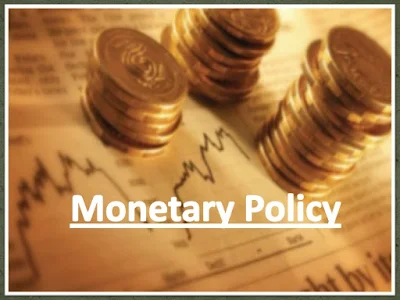
Introduction
Monetary policy also known as the credit policy, is the policy which is purely managed by our Central bank of India (Reserve Bank of India) to control the money supply in the economy & amount of credit in the economy.
Monetary policy is governed by RBI . Monetary policy through both monetary and non-monetary measures influence savings , investment , output , income & price level in the economy.To control the money supply RBI uses various instruments. Basically RBI control these rates like Bank Rates, MSF, Repo Rate, Reverse Repo rate, Cash Reserve ratio & Statutory liquidity ratio in order to manage price stability in the economy & to achieve high economic growth.
Objectives
The main aim of the monetary policy is Macro-Economic stability by maintaining price stability and adequate flow of credit to the productive sectors of the economy.The Main important objectives of monetary policy are Price stability, Exchange Stability, Neutrality of Money, Economic Development, etc.
1. Price Stability
It is one of the most important objectives of the monetary policy. RBI makes efforts to control price stability through various monetary measures. Under price stability the fluctuations in prices are to controlled to have positive impact on production, income and employment generation in the economy. In absence of price stability, inflationary and deflationary conditions are generated in the economy, which affects the various sectors of the economy.
2. Exchange stability
It is one of the traditional objective of the monetary policy. Exchange rate stability means to minimise the rate of fluctuation in the value of a currency in respect to the value of another currency. Stability in exchange rate will lead to outflow of money and encourage development of international trade leading to favourable balance of payment situation.
3. Neutrality of Money
Neutrality of money means to keep the impact of charge in the quantity of money on various elements like price, income, employment as constant. Neutrality of money does not mean that the supply of money is perfectly inelastic and fixed but it means to control the effectiveness of money.
4. Economic development
In a developing economy monetary policy encourage economic development by attaining equilibrium between money supply and demand. Economic development and the capital formation are closely related and the monetary policy through its quantitative and qualitative measures accelerating saving , investment and capital formation for rapid economic growth.
Measures of Monetary Policy
a. Quantitative Measures
b. Qualitative Measures
b. Qualitative Measures
Roles of Monetary Policy
Monetary Policy cannot directly influence economic growth but it can prove a conductive environment that encourages growth through low and stable prices. When prices are stable people can effectively plan to invest, save and consume.When there are indications of excess supply of money and rising inflationary pressures the banks adopt the dear or restrictive monetary policy through the contraction of credit.
On the other hand, when there is low money supply in the economy i.e. in the deflationary situation, bank through cheap or expansionary money policy increase the supply of money in order to stimulate domestic demand.
Instruments Of Monetary Policy
Direct Instruments
Cash Reserve Ratio
Every bank Maintain a certain % of their total deposits with RBI in the form of Cash and Net demand & Time liabilities. Current CRR is 4%. Every Bank has to pay the amount to RBI on every 15 Days.
Statutory Liquidity Ratio (SLR)
Every bank has to maintain a certain % of their total deposits in the form of (Gold + Cash + bonds + Securities) with themselves at the end of every business days. Current SLR is 20.75%.
Indirect Instruments
Bank Rate
Bank rate is also termed as “Discount Rate” The rate through which RBI charges certain % for providing money to other banks without any security for Long period of time for 90 Days & Current Bank Rate is 6.75%.
MSF (Marginal Standing Facility)
MSF is the rate through which bank can borrow funds for Short time – Overnight basis. Current MSF is 6.75%.
Repo Rate
Repo rate is the rate through which RBI lends money to commercial bank with security for Short period of time in the event of short fall of funds. Current Repo rate is 6.25%
Reverse Repo Rate
Reverse Repo rate is the rate through which Commercial Bank lends money to Central Bank of India i.e. RBI, for Short period of time. Current reverse repo rate is 5.75%


